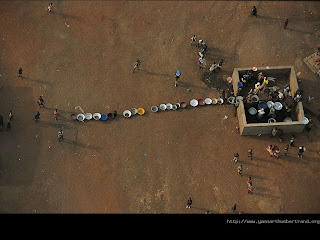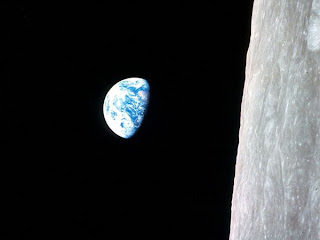DOCUBhutan
"relive your moments"
Wednesday, June 8, 2011
Wednesday, January 12, 2011
ASHES & SNOW: Gregory Colbert
Gregory Colbert's first exhibition, Timewaves, opened in 1992 at the Museum of Elysée in Switzerland to wide critical acclaim. For the next ten years, Colbert did not publicly exhibit his art or show any films. Instead, he traveled to such places as India, Burma, Sri Lanka, Egypt, Dominica, Ethiopia, Kenya, Tonga, Namibia, and Antarctica to film and photograph interactions between human beings and animals. Since 1992, he has launched more than sixty such expeditions, and has collaborated with over 130 species. Elephants, whales, manatees, sacred ibis, Antigone cranes, royal eagles, Gyr falcons, rhinoceros hornbills, cheetahs, leopards,African wild dogs, caracals, baboons, eland, meerkats, gibbons, orangutans, and saltwater crocodiles are among the animals he has filmed and photographed. Human subjects include Burmese monks, trance dancers, San people, and other indigenous tribes from around the world.
In 2002, Colbert presented his work, Ashes and Snow, in Venice, Italy. An April 9, 2002 review in The Globe and Mail stated, “Colbert unveiledAshes and Snow, an exhibition of images and photographs unprecedented in both scope and scale. Covering 12,600 square meters, it is billed as one of the largest one-man shows in the history of Europe.”
In spring 2005, the show opened in New York City in the Nomadic Museum, a temporary structure built to house the exhibition. Ashes and Snow and the Nomadic Museum then traveled to Santa Monica in 2006, Tokyo in 2007, and Mexico City in 2008. To date, Ashes and Snow has attracted over 10 million visitors, making it the most attended exhibition by a living artist in history.
Ashes and Snow has been a critical and popular success. Photo magazine declared, “A new master is born.” Ashes and Snow has been described as "extraordinary" by the Economist, and "distinctive . . . monumental in every sense" by the Wall Street Journal. Stern magazine declared that the photographs are "fascinating," and Vanity Fair described Gregory Colbert as "Best of the Best." An article in 2002 in the New York Times by Alan Riding stated “The power of the images comes less from their formal beauty than from the way they envelop the viewer in their mood. . . .They are simply windows to a world in which silence and patience govern time.”
Colbert began his career in Paris in 1983 making documentary films on social issues. His documentary, On the Brink-An AIDS chronicle, was filmed in nine countries, and was nominated for an ACE award in 1985 in the category of best documentary. Other film projects include Last Words and Finding a Way Home. Film-making led to fine arts photography.
The Nomadic Museum, the traveling home of Ashes and Snow, is charted to travel theglobe with no final destination.
Thursday, January 6, 2011
HERO of the ENVIRONMENT : Yann Arthus-Bertrand
Sometimes it takes a little distance to see the big picture. Soaring high above the earth, Yann Arthus-Bertrand takes aerial photographs that offer an intoxicating perspective on our world. Seas and cities, deserts and deltas, mountains and marshes — they all seem to bloom majestically, revealing colors, hidden textures and the mesmerizing patterns of nature.
But the photographs also act as something of a visual ecology lesson, carrying within them an implicit — or even sometimes very obvious — warning: our planet is fragile and threatened by ominous forces. To overcome pollution, deforestation and climate change, explains Frenchman Arthus-Bertrand, will require concerted action from we humans, the ones looking down on all this.
Arthus-Bertrand, 63, began shooting from the sky three decades ago. His first photographs, of the lions he was studying in Kenya's Masai Mara National Reserve, were taken from hot-air balloons. He also uses light aircraft and helicopters. His UNESCO-backed "Earth from Above" project has been seen by more than 120 million people as a touring exhibition; as a lavish coffee-table book it has sold more than 3 million copies in 24 different languages.
This year his movie Home carries his message even wider. Shot in 54 countries, it was shown mostly free of charge around the world, in open-air screenings as well as in theaters, and on TV, DVD and the Internet. Arthus-Bertrand estimates some 200 million people have already seen the film, which merges images from above with a cautionary essay about mankind's treatment of its environment. "I try to show our impact on our planet," he says. "From the air, you can see the earth's wounds."
Many are new traumas, like the outflows of waste from tar-sand extraction in Canada, toxic landfills in Dakar, Senegal, or the passage of an icebreaker through dappled, melting Arctic floes. Arthus-Bertrand rages at the desecration — and those who deny it is happening. "We don't realize the incredible imprint of man," he says. "Sure, life is good now. But we are exhausting our resources. There's not enough fish, not enough wood, not enough land. We have to do better with less."
GREEN TIP
'I don't want to give just one tip, because that could make you close your mind. But we have to live with less. Less food, less meat, less fuel, less shopping.' — Yann Arthus-Bertrand
Friday, December 24, 2010
Tips for Shooting in BLACK & WHITE
Wait for the Right Light: Linked to contrast, the lighting in a black and white shot can be very important. For example – h3 or direct lighting will often add to contrast. Side lighting will reveal any texture that a subject might have (and in portraits will accentuate features) and light from any one direction will create shadows. All of these techniques can add interest to a black and white image – however they can also be distracting – so play with light with care.Shapes and Patterns: Patterns or shapes that can sometimes almost go unseen in color (due to the color itself drawing attention) can come alive in a black and white shot. Black and White shots that rely upon pattern can often take on an abstract quality.Capture Texture: I’ve already mentioned this above when talking about side lighting – but revealing the texture of a subject can add a new dimension to an image. The sidelight does this by creating shadows.A Tip for Black and White Landscapes: When shooting black and white landscapes look for ‘active skies’. I was given this advice by a photographer a few months ago who showed me some examples of his own black and white landscape work. The skies in his images were breathtaking with wonderful cloud formations and what often looked like storms about to break. Having skies with so much ‘action’ in them added mood and a really dynamic look and feel to his images. Without this active element the images looked rather empty and dull. I think the same principle could be applied to most types of black and white images that have large parts of them dominated by any one thing. If a large part of your image is all the same tone the image can look quite lifeless (unless of course you’re going for a more minimalist look. |
Wednesday, December 22, 2010
Friday, December 17, 2010
R K Laxman : The Great Indian Artoonist
Rasipuram Krishnaswamy Laxman (born October 23, 1924,Mysore, India) is an Indian cartoonist, illustrator, and humorist. He is widely regarded as India's greatest-ever cartoonist and is best known for his creation The Common Man
 |
| R K Laxman |
Thursday, December 16, 2010
Subscribe to:
Posts (Atom)

















































